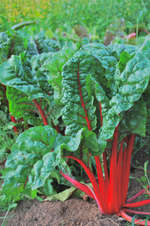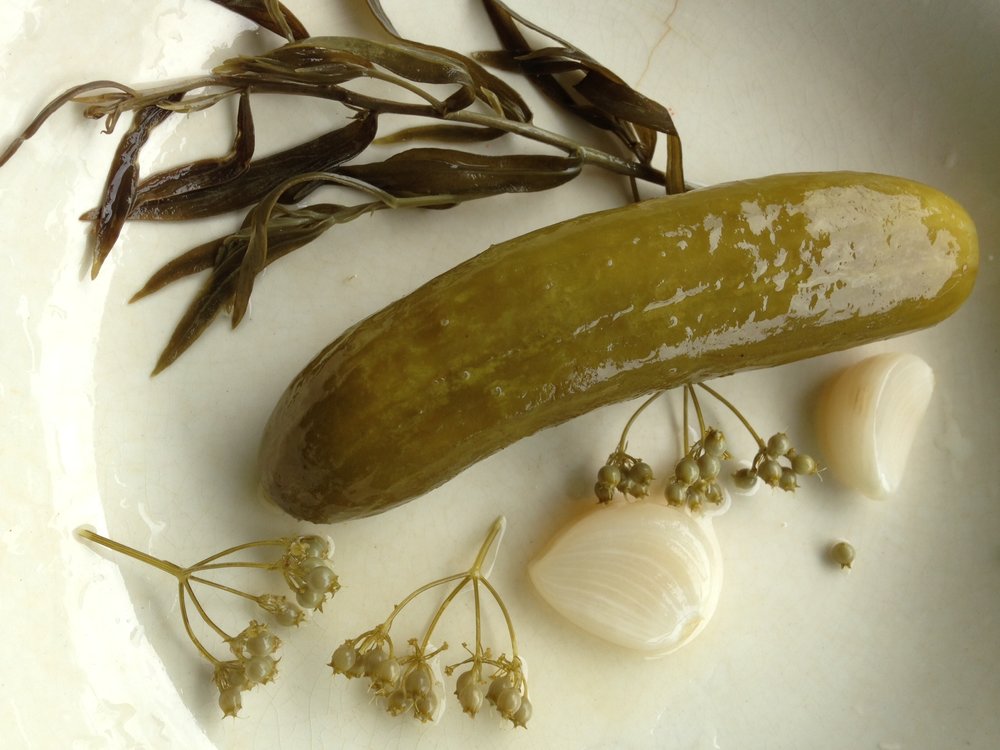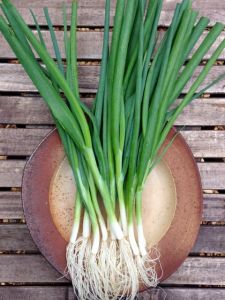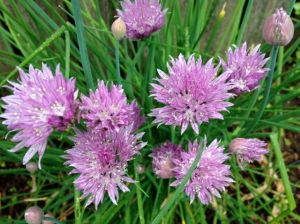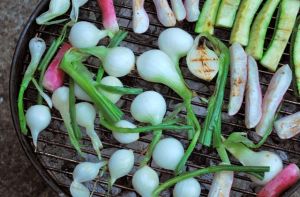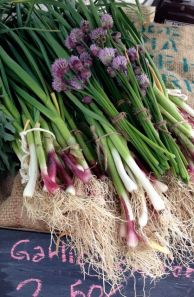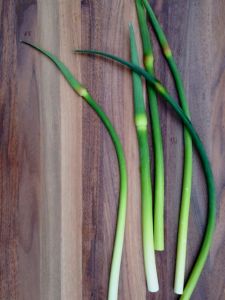A Conversation with Katherine Deumling
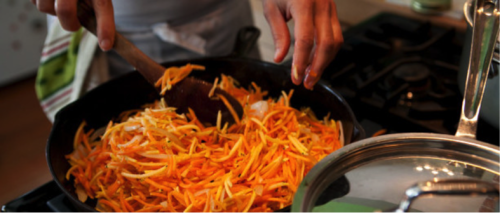 After only a quick peruse of Katherine Deumling’s ‘Cook With What You Have’ website, I knew that I would love to pick her brain on the place of home cooking in our chef-obsessed but also convenience-touting culture. Once upon a time, home cooking was the only option; now it is framed as either a hobby or a chore. Fun eating means going out, practical eating comes packaged as a minute-in-the-microwave away. But what happens when you take the time to chop a vegetable and add a touch of your own nostalgia, whimsy, or daring? Read on as Katherine and I discuss the personal and social transformation that can result from stepping into the kitchen with intention.
After only a quick peruse of Katherine Deumling’s ‘Cook With What You Have’ website, I knew that I would love to pick her brain on the place of home cooking in our chef-obsessed but also convenience-touting culture. Once upon a time, home cooking was the only option; now it is framed as either a hobby or a chore. Fun eating means going out, practical eating comes packaged as a minute-in-the-microwave away. But what happens when you take the time to chop a vegetable and add a touch of your own nostalgia, whimsy, or daring? Read on as Katherine and I discuss the personal and social transformation that can result from stepping into the kitchen with intention.
I may be lucky in that my mom was one of those cooks who would often devise our dinner menu by looking at what was in the fridge. She found clever ways to put together what we already had in the house and that approach had a strong influenced on me. Home cooking means cooking from scratch and learning from recipes, but to me it also means using what I have on hand as much as possible. Home cooked food isn’t restaurant food, composed and perfectly prepared. It is sometimes sloppy, sometimes under seasoned, sometimes unexpectedly amazing, always a work in progress. What does ‘home cooking’ mean to you? What does it mean to “cook from scratch?”
My definition is very similar to yours with the exception of the under seasoned bit! I really emphasize tasting as you go, adjusting with salt, acid, herbs, spice, etc. so that the simplest from scratch dish is as flavorful as possible. Of course it takes practice but also just trusting your instincts and tastes to create something—realizing you have all the control and agency. And frankly when you have produce like we have here in Oregon, it’s pretty simple to make delicious dishes.
I absolutely love the challenge of looking around my small garden, fridge/freezer and pantry and creating something nourishing. I also happen to have a well-stocked pantry with beans, lentils, grains, dried peppers, spices, oils, vinegars, nuts, seeds, etc. which makes cooking pretty simple. I love the crafty, frugality of cooking this way. I get great satisfaction out of preparing dishes with seemingly “nothing” or dribs and drabs (as my grandmother would have said) of vegetables left in the crisper. I once made mixed vegetable savory pancakes with radish tops, carrots, scallions, a bit of cabbage and some cilantro that was about to go bad, into a dinner that my family raved about. That’s my idea of fun!
Many people have become accustomed to purchasing prepared or “instant” foods and do not believe they have the skills or the time to cook their own meals from scratch. When I began cooking fresh greens like kale or chard, I marveled at how quickly they could be sautéed into a delicious and healthy meal. Throwing together a hearty salad or stir-fry can take as little as 10 minutes. We perceive cooking as a time consuming, arduous task, but with a pinch of willingness, it becomes clear that time is not the primary obstacle to making tasty, nutritious meals. What do you believe are the main barriers to becoming a successful home cook?
You hit the nail on the head. I think the barriers are multiple: 1) People often think they don’t like many vegetables because they’ve never had them prepared in a way that is simple and tasty and thus they don’t see the point in cooking them. 2) As you say, people think it takes a lot of time and has to be fancy and involve lots of ingredients. I think cooking shows have been a bit of a disservice in this regard as it furthers the idea that cooking is performance, art, fancy, etc. 3) Our culture (if I can generalize) gives the message that it’s not the best use of your time, it devalues everyday cooking, makes it something to be avoided. 4) Relatedly, it’s seen as a burden rather than something that might actually simplify one’s life, make it better, tastier, and more fun. 5) People aren’t accustomed to tasting as they cook and using their own judgment and taste buds in the process—so lack of confidence, lack of translating skills people use in other parts of their lives to cooking.
Food activists such as Dan Barber and Michael Pollen see cooking at home as a political act and believe it is the first and most necessary step to reversing a number of disturbing national trends relating to the industrial food system (increases in chronic diseases and obesity, factory farming, GMO crops, and even global warming and water use issues, to name a few). I tend to agree, largely because I see cooking as such a profound but simple act. It forces a higher level of awareness and is embedded with healthy constraints (i.e., because you are not hoping to preserve a meal longer than the time it takes to get it on the table, you would never use as much salt as is found in most processed foods). I would add that learning to cook also has the ability to create a sense of empowerment and satisfaction. What would taste mediocre at a restaurant tastes great at home because I made it. What do you believe home cooking has the power to transform?
With the risk of sounding hyperbolic, everything! First of all, if you know how to cook with simple, whole ingredients, including staples like beans and grains that are inexpensive and shelf stable and you can grow some herbs, you can eat well on little money and be healthy. There are many, many people who truly have few dollars to spend on food and many who don’t even have access to a stove or basic kitchen equipment, but if you do and have the time/ability to cook for yourself, you will be much better off than with the industrial, pre-fab alternatives—resulting in better health, more agency, and confidence.
And while we talked about how cooking doesn’t have to take a lot of time I also want to stress that it does take forethought, organization, and certainly some time to do this on a regular basis and for a family. Doing so can be immensely satisfying and nourishing in many ways and does, as you say, connect you to place, community and ideally people and farmers—all of which runs counter to the industrial food system. Cooking with children gives them skills, engagement, joy and potentially a life-long independence and an awareness of the impact our food choices and policies have on people and planet. And lastly, the joy of good food shared with others should not be an underestimated force—this is one of the tenets of the Slow Food Movement—and we could use more well fed, happy people!
Dan Barber goes on to say in his new book, The Third Table, that “a pattern of eating can support a landscape,” meaning how we cook and what we eat is a road that goes two ways. The food that is available to us in season informs and creates, over time, a unique regional cuisine. Likewise, the popularity of and attraction to foods in their prime season supports the realities of agriculture: we cannot have everything always, though our industrial food system has tried very hard to make that so. Gary Paul Nabhan, another advocate of regional eating, has proposed the idea of distinguishing what he calls foodsheds—boundaries defined by the sustainable (and therefore reliable) food sources unique to a region’s landscape and climatic limitations. What do you see as some characteristics of the foodshed, or the “pattern of eating,” in which we live?
We used to (pre-1980s) grow more staple crops in the Willamette Valley; even though our wet climate isn’t completely ideal for beans and grains, there used to be more. Since the economic downturn in 2008, we have seen a slow shift to more beans and grains again, in part because with the crash the grass seed industry took a hit and some of those acres are being transitioned to edible crops instead. I am particularly interested in these very nutritious, shelf stable crops and hope that we can really increase the number of people who purchase these foods locally and support this transition. The interest seems to be there, with seed breeders and farmers working hard to cultivate varieties that thrive here.
I believe we have an opportunity to do more of what Dan Barber talks about and not just eat the “sexy” fleeting greens and vegetables that get more attention. Even though we have an extraordinary abundance and breadth of varieties grown for market here, we still have a fairly small number of people who primarily buy local products so I think there is a bit of tension between how some perceive our region and the reality of how people shop and eat. Even with our vibrant local food scene, farmers do not have an easy time making a living and I would like to see our foodshed strengthened, especially on the consumer front in really putting our money where our mouth is.
Big box stores certainly command the lion’s share of the food market in our country, and farmers’ markets are perceived by many as an expensive, privileged alternative. I began shopping at farmers’ markets when I was a poor student and could provide myself with enough vegetables to get through the week on just $10-$15. I chose to shop at the market less because of price and more because I wanted a high quality product—one that would taste better and keep longer. I credit my cooking practice for teaching me how to taste and appreciate freshness, and farmers’ markets for exposing me to many new kinds of foods. How does where you buy your food influence what and how you cook? How do you respond to the idea that cooking is a pastime of the privileged?
Where I buy my food completely influences what and how I cook. The produce is so delicious that it enables me to spend less time on cooking it and fussing with it to make it good. I also cook things based on recommendations by the farmer who grew it. What I cook is completely determined by where I go to shop and I rarely go to the market with specific items in mind (other than restocking cornmeal, beans, etc.) but what I find that looks good and I can afford.
As to cooking being a pastime of the privileged I would say two things: It has been framed as such for a variety of reasons such as longer work hours, poorer wages, the growth of fast food and convenience foods of all kinds, and the notion that cooking is drudgery. We have a tension in our culture of cooking being, on one hand, relegated to the poor and mostly women who don’t have enough “skill” to do more “important” work, and on the other hand, it’s said to be a pastime of the privileged.
Crafty cooks can eat better on fewer dollars by cooking from scratch than by purchasing processed or prepared foods. I know many people, including some of the Head Start staff and families I work with, who cook well from scratch and with food boxes and are not privileged in the conventional sense of the word. I understand why this tension exists and there are so many structural reasons for it that are complicated and hard to even parse, and that vary from place to place. I think of my job, my teaching and recipe creation and farmer “boosterism” as a small part of working to counter these assumptions and real and perceived challenges about cooking.
That said, cooking boutiques make it appear that dozens of expensive gadgets are needed to cook well. What tools and resources do you believe are the most essential for beginning home cooks?
A good, sharp 8-inch chef's knife, a big cutting board, and a cast iron or other heavy skillet. I love certain food blogs as a free and accessible resource to learn from, especially Heidi Swanson's 101cookbooks.com. If you find a blog that resonates with you, it can be a regular source of inspiration and education. There are dozens of fabulous ones; I also love Rachel Eats (based in Rome), which keeps me feeling connected to my long-past Italian days. As for cookbooks, I LOVE many of my books. I'm not sure they would all be great for beginners, but one of my favorites that might appeal to any level of cook is Nigel Slater's Tender. Other excellent primers include: Alice Waters' The Art of Simple Food, Mark Bittman’s How to Cook Everything, and Deborah Madison’s The New Vegetarian Cooking for Everyone.
But really I think cooking—for beginners or more advanced folks alike—is about doing and doing with as much of your own creativity, judgment, and instinct as possible. This takes inspiration by others of course, but doing, doing, doing and guessing and trying and tasting is what I would suggest. And asking your friends, parents, grandparents, and farmers about what they cook and how they do it. This is how I learned to cook, and my mother makes any vegetable taste good with simply her giant cast iron skillet, olive oil and salt. Don't start fancy. Start simple and you'll be rewarded with satisfying meals. Sauté a bunch of summer squash until they are browning and soft, be sure to salt well and then sprinkle with fresh herbs and/or grated Parmesan. Fry an egg in one side of the pan and have yourself the most satisfying dinner!
Sarah West is a gardener, eater and admirer of the agricultural arts. She gladly spends her Sundays as assistant manager of the Hillsdale Farmers’ Market, basking in the richness of its producers’ bounty and its community’s energy. Find archives and more at http://thefatofthelandblog.wordpress.com.


 i
i


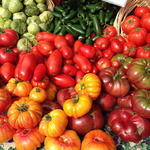

 From woodlands to meadows to marshy banks and alpine perches, the lily family is well represented among the wildflowers of our temperate region. Members of the lily clan served as important food sources for tribes throughout the Pacific Northwest long before European settlement—from the starchy staple of camas root to medicinal wild onions—and later as a source of garden specimens sent back to mainland Europe in the early days of Western exploration.
From woodlands to meadows to marshy banks and alpine perches, the lily family is well represented among the wildflowers of our temperate region. Members of the lily clan served as important food sources for tribes throughout the Pacific Northwest long before European settlement—from the starchy staple of camas root to medicinal wild onions—and later as a source of garden specimens sent back to mainland Europe in the early days of Western exploration.
